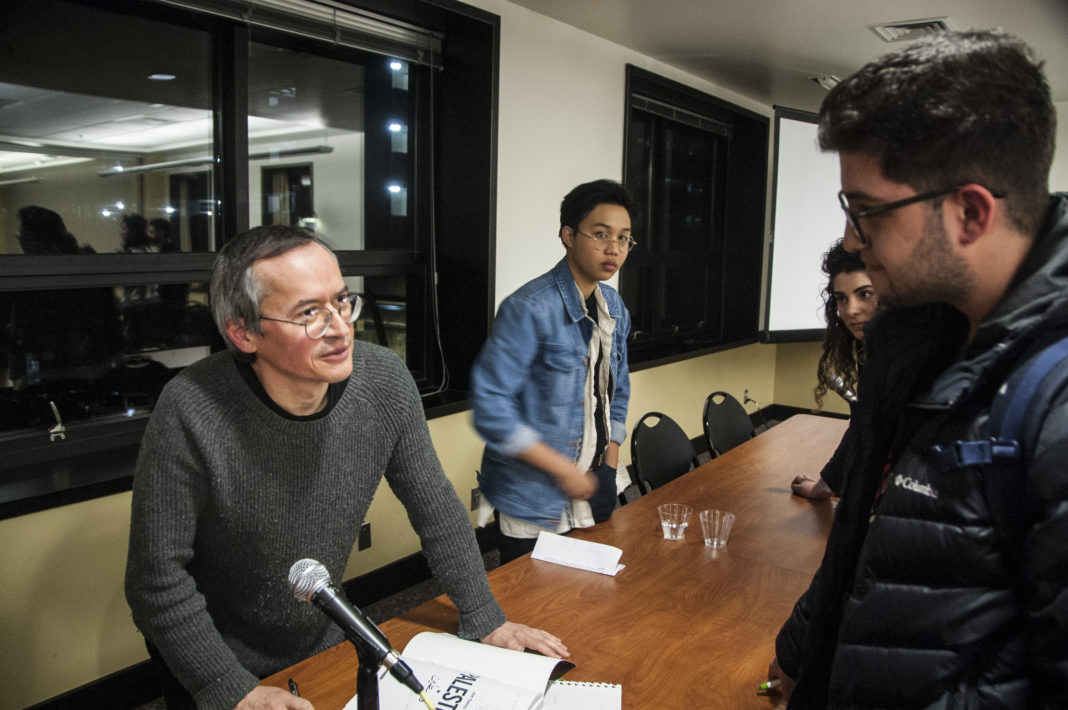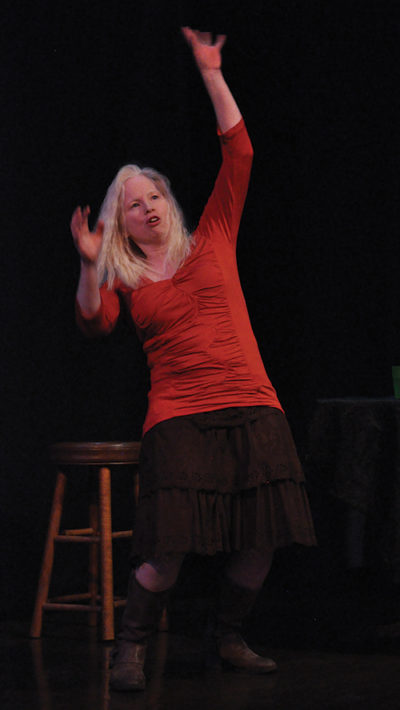Joe Sacco joined Portland State’s University Honors College on Feb. 28 for a Q&A about his rather unconventional approach to journalism. Sacco is a cartoonist and journalist, two things that don’t always go hand in hand. He is on a short list of non-fiction graphic novel legends who create art about real life but with a medium typically thought of as being reserved for things removed from reality: fantasy, superheroes, crass jokes and cheap laughs.
One of the students asked Joe Sacco why he seems to be so interested in violence, conflict, oppression and oppressed people.
“I mean I guess my question to people who aren’t interested in that is how could you not?” Sacco replied. “It’s almost natural, I don’t know if I can really disentangle why I’m interested in that sort of thing, it just bothers me. I mean there are a lot of things that just make me kind of angry; and when i say angry I mean that in the best possible way, ‘cause I think anger can really motivate you to do something.”
Objectivity, honesty, and being a character in your own journalism
A common question and potential piece of criticism of Sacco’s work is how he inserts himself as a character into his journalistic graphic novels and how Sacco’s character presenting his opinions removes the ability for the work to be truthful or unbiased. Sacco doesn’t agree.
Regardless of how an article is written, reporters are present in the situations they’re reporting on, and their questions and story scope can be affected by subjective experience. Sacco also brought up how odd it is to read news articles written in third person about a ‘reporter being stopped at a border,’ when that reporter is often the author of the article.
“When I studied journalism at the University of Oregon, we were told ‘you have to be objective,’” Sacco said. “I get it as a concept. Most political things should be objective, but when I look around…in the newspapers, I don’t see objectivity; I see the facade of objectivity. I think it’s very difficult for journalists to say they’re objective. We all come with preconceived ideas and notions—particularly when we’re in another culture and we’re trying to understand them.”
Sacco discussed Palestine and how before going to Palestine he thought he had the Palestinian people figured out because of the way he saw them portrayed while growing up. Certain actions taken by Israel made him question his own views. In the beginning of Palestine, some of Sacco’s previously held vicious prejudices come out through his character’s thoughts. Although difficult to read, they’re honest and allow his personal transformation to coincide with the reader’s journey of understanding his human characters and their stories.
Sacco strives for honesty in his reporting and said he feels that objectivity is unobtainable. By honestly reporting what he sees in the best way possible, Sacco claims he is providing an even more accurate report.
“[On assignment] if I see something that goes against my own prejudices, well, I’ll still report it,” Sacco said. “What you realize is that victims are not angels, and often victims will do things or say things that are counterproductive to their overall picture and won’t look good to a reader.”
In Palestine, Sacco wrote he felt like a vulture—preying upon people’s unfortunate circumstances to get rich off of their stories. Sacco discussed how during the writing process, he still wasn’t sure what he was doing and challenged himself by asking hard questions about the difficult reality of reporting about oppressed peoples.
In order to combat some of these hard questions, Sacco said he attempts to maintain honesty and humanity. Sacco tries to avoid this callousness by getting to know the people he’s writing about, and instead of hiring typical professional translators or guides, he seeks out respected members from the communities he writes about.
Sacco noted there have been more extreme events in Palestine that could have been more sensational, but he chose to exclude the extremes and only include stories that were more representative of situations many people normally encounter. Common stories allow Sacco to illustrate the most accurate depiction of patterns.
“I hope people learn something from my books,” Sacco said. “Basically, I met these people, I liked them, and I want people to know about them and find out why what is going on is going on and understand their points of view.”
Cartoons are real too
Initially, Sacco said he was worried people wouldn’t take him seriously if he told them he was working on a journalistic cartoon. After getting over this anxiety and telling people about his process, readers began relating to his work through popular cartoonists such as Naji al-Ali, a Palestinian artist.
Sacco’s notebooks include self-reminders to draw children and to describe the way the dust swirls up. His reminders to include details like this are what allow readers to feel a sense of environmental realism. Comics can paint a picture capable of transporting the reader into unfamiliar situations and places—they can also take you back. After Palestine was published, Sacco was able to bring it with him to show people what he was doing with his reporting. Even if they couldn’t read English, they were still able to identify the concepts discussed in the book.
Currently, Sacco is working on a book about the indigenous nations of Canada and a story about the Hindi Muslim riots in India. Portlanders may remember the comic Sacco created for Chloe Eudaly’s political campaign called “Rent Crisis,” which shows the burden the rising cost of living in Portland has put on its residents.
Sacco said he believes honest, responsible journalism is about being human and treating others with humanity: a refreshing outlook I’m hoping will spread.






